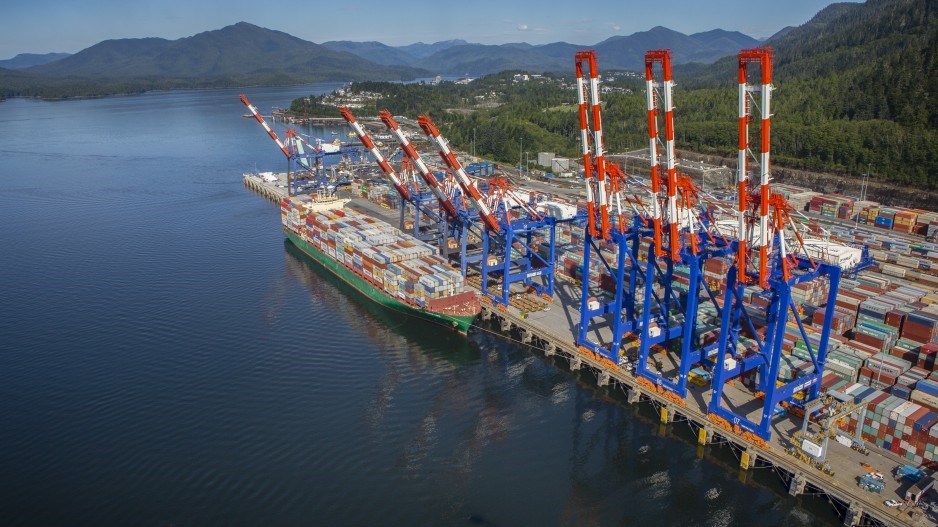Compared with the Port of Vancouver, the Port of Prince Rupert is small in terms of cargo volume.
But for the Prince Rupert region, it is a disproportionately large economic engine, generating one out of every four jobs in the region.
According to a new InterVistas Consulting economic impact study, $35 billion worth of goods flowed in and out of the port’s terminals in 2016, generating $1 billion in economic activity, about one-quarter of which was wages.
In 2016, the port and related activities in trucking, rail and logistics directly employed 3,100 people – more than double the 1,300 in 2009. Half of those jobs are in Prince Rupert, which has a total labour force of 6,520.
“It’s almost a 140% increase in a matter of seven years,” said Ken Veldman, director of public affairs for the Prince Rupert Port Authority.
“So the impact that that’s had here in Prince Rupert, and northern B.C., when you start looking at the rail, the trucking and the logistics that run through other communities like Terrace, Smithers, Prince George – it’s really a significant impact here.”
In addition to the Prince Rupert harbour, which handles break-bulk cargo such as logs, chemicals and fuels, there are five terminals under the port’s authority:
•Northland cruise ship terminal;
•Pinnacle Energy’s Westview wood pellet terminal;
•Fairview container terminal;
•Prince Rupert grain terminal; and
•Ridley coal terminal.
By 2020’s first quarter, the port will have a sixth: a new propane export terminal that Alta-Gas Ltd. (TSX:ALA) is building at a cost of $500 million.
Cargo shipments through the port have fallen annually since 2013 while cruise ship traffic has increased, from 4,700 passengers in 2014 to 7,100 in 2016.
The drop in cargo volumes and value between 2013 and 2016 results directly from a steep drop in metallurgical (“met”) and thermal coal shipments.
Steelmaking and thermal coal prices fell sharply in 2011 due to a global glut and stayed low until around the beginning of this year. Met coal shipments through Ridley Terminals fell to just four million in 2016 from 12 million tonnes in 2012.
Met coal prices have since recovered and export volumes have been rising since the beginning of this year. As of October, shipments of both metallurgical and thermal coal were up to 6.2 million tonnes, compared with 2.8 million tonnes for the same period in 2016.
Despite the dramatic decline in coal shipments between 2013 and 2016, the port’s income for 2016 ($50.4 million) was nearly double that of 2015 ($26.1 million), according to the port’s most recent annual financial statements.
“Certainly the container business tends to have a significant revenue impact for us and that’s continued to improve,” Veldman said.
Ten years ago, the Fairview container terminal opened in Prince Rupert and has allowed for more diversification of the types of products for export and import.
“There’s been a really significant growth story that’s happened here in 10 years but there’s also a significant diversification story,” he said.
Container traffic accounts for about 39% of the value of all goods moving through the five terminals. About 33% of the container traffic is for lumber and other wood products, 31% is for grain, 13% for pulp and paper and 5% for agricultural products.
More and more volumes of lumber and agri-foods have been moving through the port to Asia.
“Where we’re seeing a real increase is in agri-food right now and that’s from all over the continent,” Veldman said.




